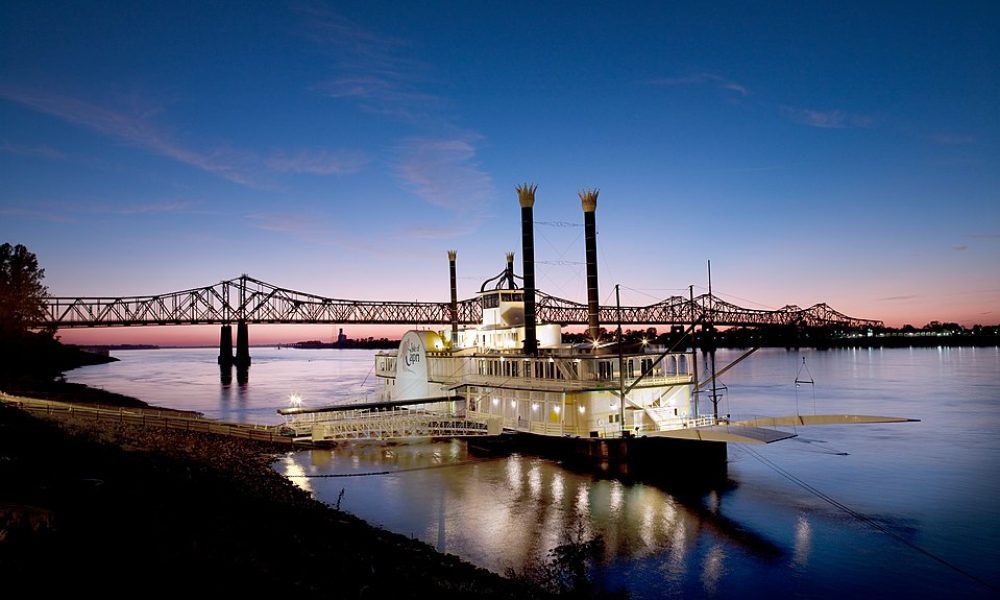Riverboat gambling was once the leading edge of the Great Expansion of casino gaming. On April Fools Day 1991, in Bettendorf, Iowa, Vanna White cut the ribbon launching the Diamond Lady on her maiden gambling cruise. It was the beginning of riverboat gambling and the expansion of casino gambling outside of Nevada and New Jersey.
Thirty-one years later, that expansion continues unabated. Gaming revenues have risen from something like $8 billion in 1990 to $53 billion in GGR from casinos, VLTs, sports betting, and igaming in 2021. There was also a nearly equal amount of GGR from more than 500 tribal casinos. The National Indian Gaming Regulatory Act passed in October 1988, so Native casinos were just beginning to set sail when the Diamond Lady pulled away from its dock.
Things were moving quickly in those early days. The enabling legislation in Iowa passed in 1989 and within two years, five riverboat casinos were taking cruises to nowhere on rivers in Iowa. In 1990, voters in Colorado approved limited-stake ($5 maximum wagers) gambling in three mountain towns and the first casinos opened in 1992.
The Diamond Lady spent only a year in Iowa before she moved to Biloxi, Mississippi. There the Diamond Lady and her counterpart, the Emerald Lady, formed the core of what would become a major gaming corporation, the Isle of Capri. The corporations that grew out of the first riverboats were another trend in those early days of the Great Expansion.
The enabling legislation in Iowa and Colorado had more than one objective. Each state wanted the tax revenue, but also wanted to limit the risk to gamblers by making the casinos difficult to access and limiting the amount players could wager and lose. The concept of limiting exposure became popular and the riverboat model spread to other states. However, the restrictions that reduced risk to gamblers also reduced the long-term success of those models. To combat growing competition and increase revenues, most of the limited-stake and riverboat gambling states altered the restrictions. Riverboats were allowed to move onto shore and in Mississippi, hurricane Katrina was the final blow. After Katrina, it was clear patrons would be safer and the casinos more profitable on land than on water. In comparable moves, Colorado gradually increased the operating hours of casinos and raised the betting limits.
New limits, longer hours, and land-based operations were the death knoll of the Diamond Lady; her sister was destroyed by Katrina. The Diamond Lady was never really suited to be a casino. Both riverboats had at best a limited viability taking tourists on romantic paddlewheel cruises up and down the Mississippi. Tourists could look out at the river and dream of Tom Sawyer and Huckleberry Finn floating down the mighty Mississippi, with the pilot Mark Twain calling out the depth soundings. However, when gambling on the river became legal, those two boats were the only ones readily available for quick-thinking entrepreneurs like Bernie Goldstein to buy, and renovate, then install slot machines and table games, hire dealers, bosses, and riverboat captains, and set sail as soon as possible.
In the short term, it worked and they made money. But the profits came more from a lack of competition and a virgin gambling market than the quality of the offerings. Indeed, the boat cruised for a specified amount of time, then returned to port. There, it unloaded the passengers, loaded the next group, then set sail again. Gamblers could not begin to make bets until the boat was again on the river.
So as soon as other options became available, those same quick-thinking entrepreneurs moved on. The Diamond Lady floated down to Biloxi, Mississippi, where it did not have to sail and customers could come and go as they pleased.
The poor Diamond Lady aged out even in her new home; she was too old and unsuited to a more modern design. And by that time, small riverboats had long ago ceased to be variable as operating casinos. Sadly, she was sold, sold again, and just disappeared. A woman in the Northeast claimed ownership and said she had a plan to repurpose the boat and begin a new adventure. In the meantime, the Lady had slipped below the surface of the water and beached herself in the Mississippi mud in McKellar Lake, itself a backwater. The area is experiencing a drought and McKellar Lake is drying up. And that is where the Diamond Lady reappeared, sitting in the mud and looking nothing like the sweetheart that Vanna White launched so many years ago.
She might be a metaphor for riverboat gaming. It had its day; at times, that day was grand. However, the gaming industry has moved on, leaving the romantic, Mark Twain-Tom Sawyer-ish paddlewheelers mired in the mud of history.



